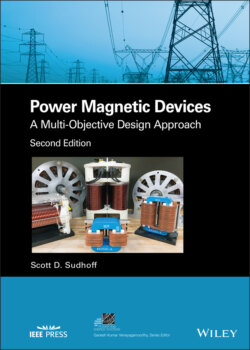Читать книгу Power Magnetic Devices - Scott D. Sudhoff - Страница 38
Example 1.8A
ОглавлениеThe concept of crowding distance is illustrated in Figure 1.19. Suppose we wish to calculate the crowding distance of population member 7. Using (1.8-2), we have
(1.8A-1)
At this point, the remaining elements of the NSGA‐II can be set forth. The process is illustrated in Figure 1.20. Therein, we start with a population P[k]. Using crowded tournament selection (CTS), a mating pool M is created which is in turn used to create a population of children C. Next, the current population P[k] is combined with the children C to form an enlarged population R. Non NDS is used to divide this population into groups based on front, yielding sets F1, F2, and so on. Next, these sets are used to create the next generation P[k + 1]. This is done by filling P[k + 1]with sets of fronts from first to last. At some point, shown as F3 in Figure 1.20, the full front will have more members than remain empty in P[k + 1]. At this point, crowding distance selection (CDS) is used to determine which members of the final included front are included in P[k + 1]. In particular, the members of F3 with the best crowding distance are used to complete the next population.
Figure 1.19 Crowding distance.
Figure 1.20 Elitist nondominated sorting genetic algorithm (NSGA‐II).
Using this algorithm, as the population evolves, it will come closer and closer to approaching the Pareto‐optimal set, which will lead to a family of designs. We will use multi‐objective optimization extensively in this book for the design of power magnetic devices.
